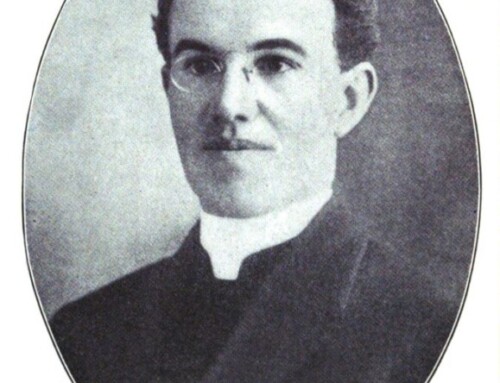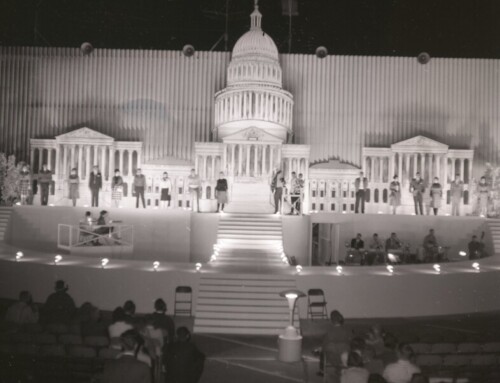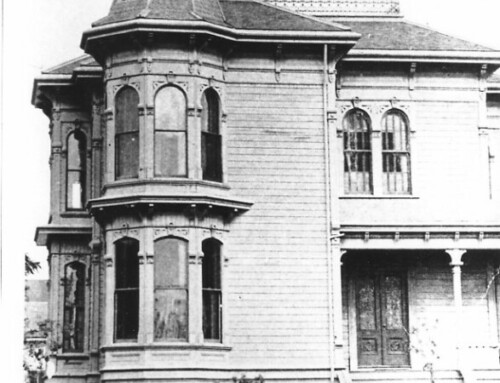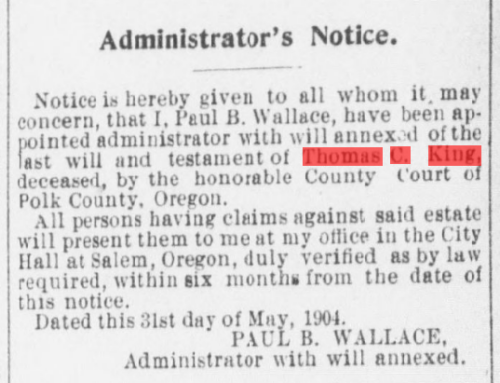The following document was found in the Willamette Heritage Center’s subject file for the community of Marion, Oregon. Unfortunately, there was no provenance information attached. The author appears to be Margaret Jane Webb Davidson (1882-1971), the daughter of William Webb and Catherine Slyter mentioned in the document and wife of Eli Davidson. The document must have been written before 1971. While some of the information is verifiable (the start date of the Post Office), the other comments should be taken with the understanding of the time and context in which it was written.
History of Marion, Oregon
Compiled by Margaret Davidson
Marion Pickard donated land for the railroad at Marion in 1870 and the railroad was completed to Portland in 1871. The Post Office was established January 9, 1871. In the 80’s the store and the P.O. was west of the railroad near the creek. The hotel, sawmill, tannery and livery stable was possibly on the east side of the tracks. There was a grain elevator near the tracks, south of the depot. The farmers from Scio hauled their grain by four horse teams to ship by train from here. The livery stable cared for the teams and the drivers were made comfortable at the Hotel.
Sometime in the 80’s a fire destroyed many of the buildings and the Hotel was rebuilt on the west side of the tracks near the creek.
Logging and wood cutting also rail splitting was the main industry. Men cut the timber, hauled the logs to sawmill to cut into lumber to build their houses. Oxen were used for logging rails and they were split and used to fence pastures. Wood was cut and corded along the railroad tracks as trains were operated by steam engines.
The section men were Chinese. They lived in an old shack and did much fighting with knives.
There was a saloon and much drinking was done there. A young man studied to be a telegraph operator and he worked at the depot nights. He was afraid to walk the short distance from the hotel to the depot because the drunk men would raise up along the train and curse him.
About this time families of the Friends denomination moved in and bought land and started fruit nurseries. Sold property for fruitland they held and organized a Friends Church in the old one room school house. They build their church in 1891.
The B.F. Hinshaw family came in 1890 form Kansas. The Webbs–William, Catherine, Lon, Minnie, Margaret and Cora came from Ellsworth, Kansas in 1894, Mordecai, Hannah & Eli Davidson came in 1891.
Marion is located 15 miles south of Salem, “our Capital City” and 67 miles south of Portland.
In 1846 when Oliver Pickard crossed the plains in his wagon train, he was accompanied by Billy and Mose Edgar, who settled in this vicinity.
It is believed that there haven’t been any Indians in the vicinity for probably one hundred years. The land has been settled by teh whites, and the Indians had moved back into the hills. Old histories tell that the Indians were sickly (no account) tribe even in Jason Lee’s time. There is an old Indian grave where Chief Louis of the Multnomah tribe was buried on the Thomas Winn place.
Some fot eh early pioneers that settled around Marion were: Andrew and Howard Hunsaker, Isaac McCully, Jessie Adams, J. M. Johns, Marion Cook, Henry Gulvin, Jessie Parrish, Bill Walls, Dexter Robbins, Chris Harley and the McKinneys.
Mr. McKinney had a sawmill, grist mill, carding mill and a general store. These were located on the land now owned by J. W. Colgan and others. Once during a record ‘high water’ Mrs. McKinney stayed up in a tree with several of her children and had a hard time keeping them from going to sleep and falling into the water below. The old McKinney brick house built on the prairie is now occupied by their daughter, Mrs. Tracy. Wells built a house which had eight fire places on what is now Harley Libby’s place. It burned down several years ago.
Transportation is made easy by paved and oiled roads. With the exesption[sic] of five miles of the Pacific highway all other roads are oiled and paved. (This road will be oiled this summer.)
The Southern Pacific railroad follows the Willamette valley through Marion. At one time the railroad did more business in Marion than any other town in the Willamette valley with the exception of Salem. All of the grain from Stayton, Scio, Lebanon and surrounding vicinities was brought to the three warehouses here. Ovid Pickard, brother of Marion Pickard, remembers having seen one hundred four-horse team wagons standing in line to unload grain here.







Leave A Comment